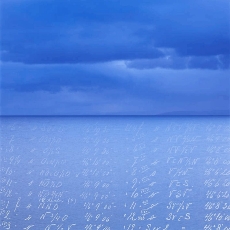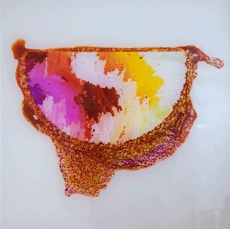Did you know that there are Norwegian artworks in Antarctica?
On the walls of Norway’s most isolated research station – Troll – you can find exquisite works of art created by Norwegian artists.
 «Open Water / Tracks and signs». Photo: Arvid Sveen
«Open Water / Tracks and signs». Photo: Arvid Sveen
 «ARKTIS ANTARKTIS Columnar-Granular». Photo: Jenny-Marie Johnsen
«ARKTIS ANTARKTIS Columnar-Granular». Photo: Jenny-Marie Johnsen
 «Whiteout». Photo: Jenny Rydhagen
«Whiteout». Photo: Jenny Rydhagen
The empty walls of Troll Research Station needed to be filled with something for the overwintering team to rest their eyes on during their long winter months of isolation. In cooperation with KORO (acronym for Art in Public Spaces), the Norwegian Polar Institute arranged an art project which resulted in the creation of the specially designed artworks that now grace the station’s walls. The artists Arvid Sveen, Jenny Rydhagen and Jenny-Marie Johnsen were commissioned to decorate the station and all three let their works be inspired by research-related material and historic artifacts such as photographs, documents and letters.
Arvid Sveen’s work ”Open Water / Tracks and signs” consists of four photographs showing four different horizons. Into each photograph he has copied fragments of handwritten notes from various Norwegian expeditions in Antarctica.
Jenny Ryghagen’s work ”Whiteout” is composed of six photographs that illustrate the fascination most people feel for the Antarctic landscape, hidden away on a relatively new-found continent, inaccessible by virtue of its harsh climate and desolate location. The artworks combine quotes from Antarctic explorers and images of artifacts photographed through a macro lens, triggering associations with snow, ice and seas.
Jenny-Marie Johnsen’s work “ARCTIC-ANTARCTIC Columnar-Granular” consists of five photographs that originate from images captured by researchers at the Norwegian Polar Institute, showing millimeter-thin slices of ice cores in polarized light. Columnar denotes ice in the form of needles. Granular stands for more spherical shapes.
“In an isolated place like Troll, the inspiring and calming influence of art is invaluable,” said Jan-Gunnar Winther, director of the Norwegian Polar Institute, when the artworks were presented in Tromsø in 2009 – just before they were shipped away on their long journey to Antarctica.